The AP Biology – 2024 Cheat Sheet is a comprehensive guide designed to help students master essential biology concepts for the AP exam. It covers key units including Chemistry of Life, Cell Structure and Function, Cellular Energetics, Cell Communication and Cycle, Heredity, Gene Expression and Regulation, Natural Selection, and Ecology. Each unit provides condensed, easy-to-understand notes highlighting critical processes, functions, and relationships. This cheat sheet also offers practical exam tips, ensuring students are well-prepared to tackle Free Response Questions (FRQs). Use this guide to streamline your study sessions and achieve success in AP Biology.
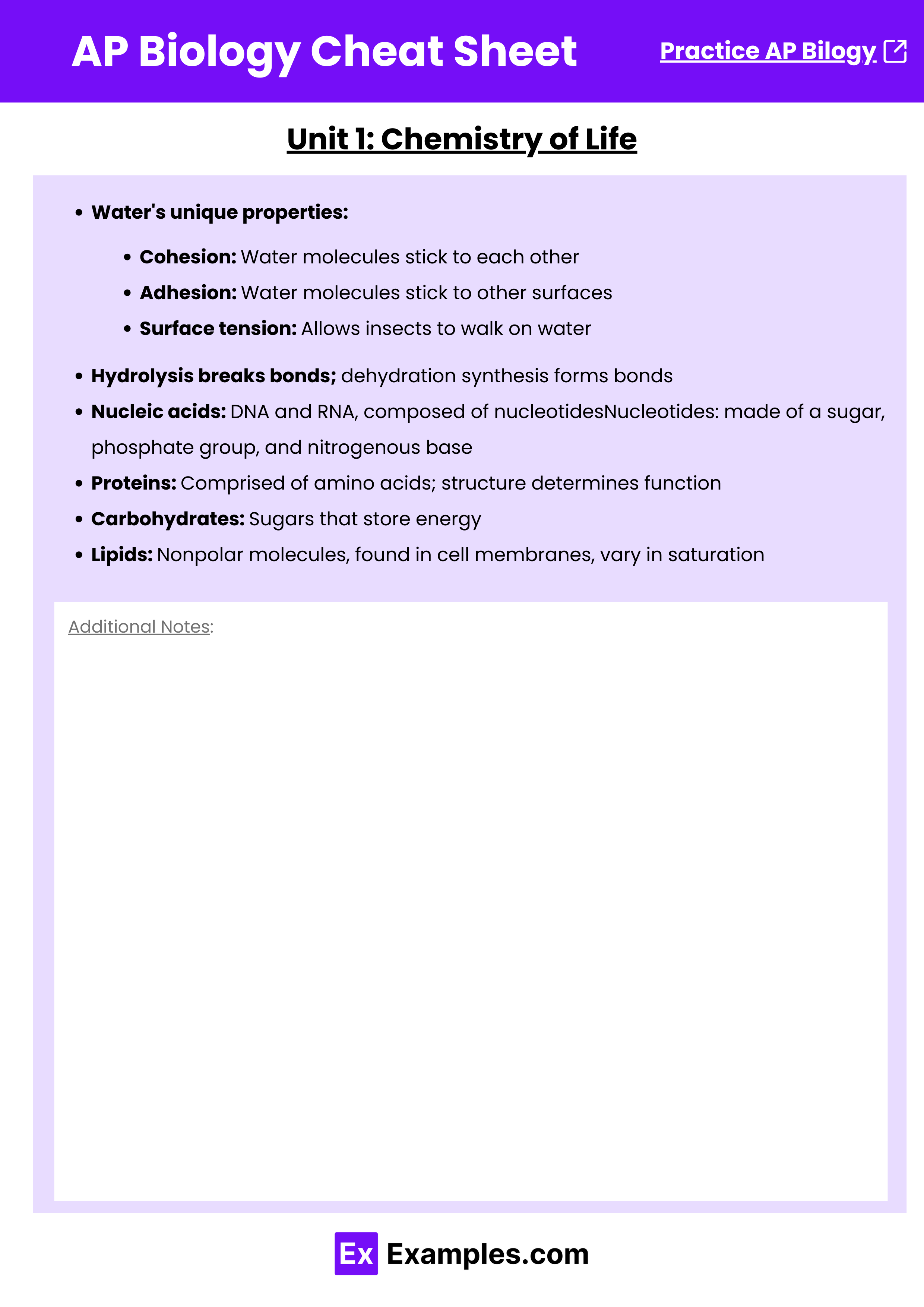
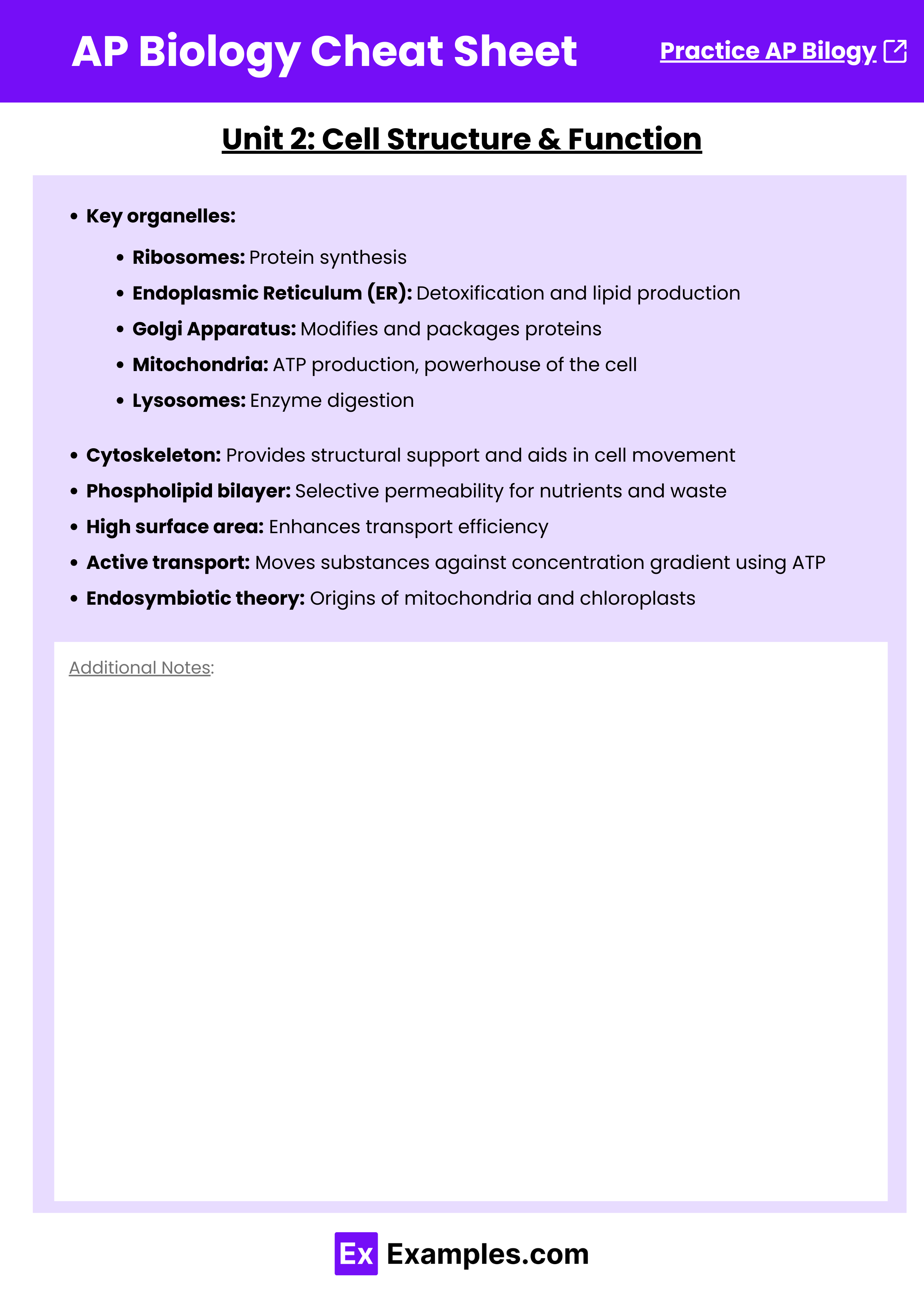
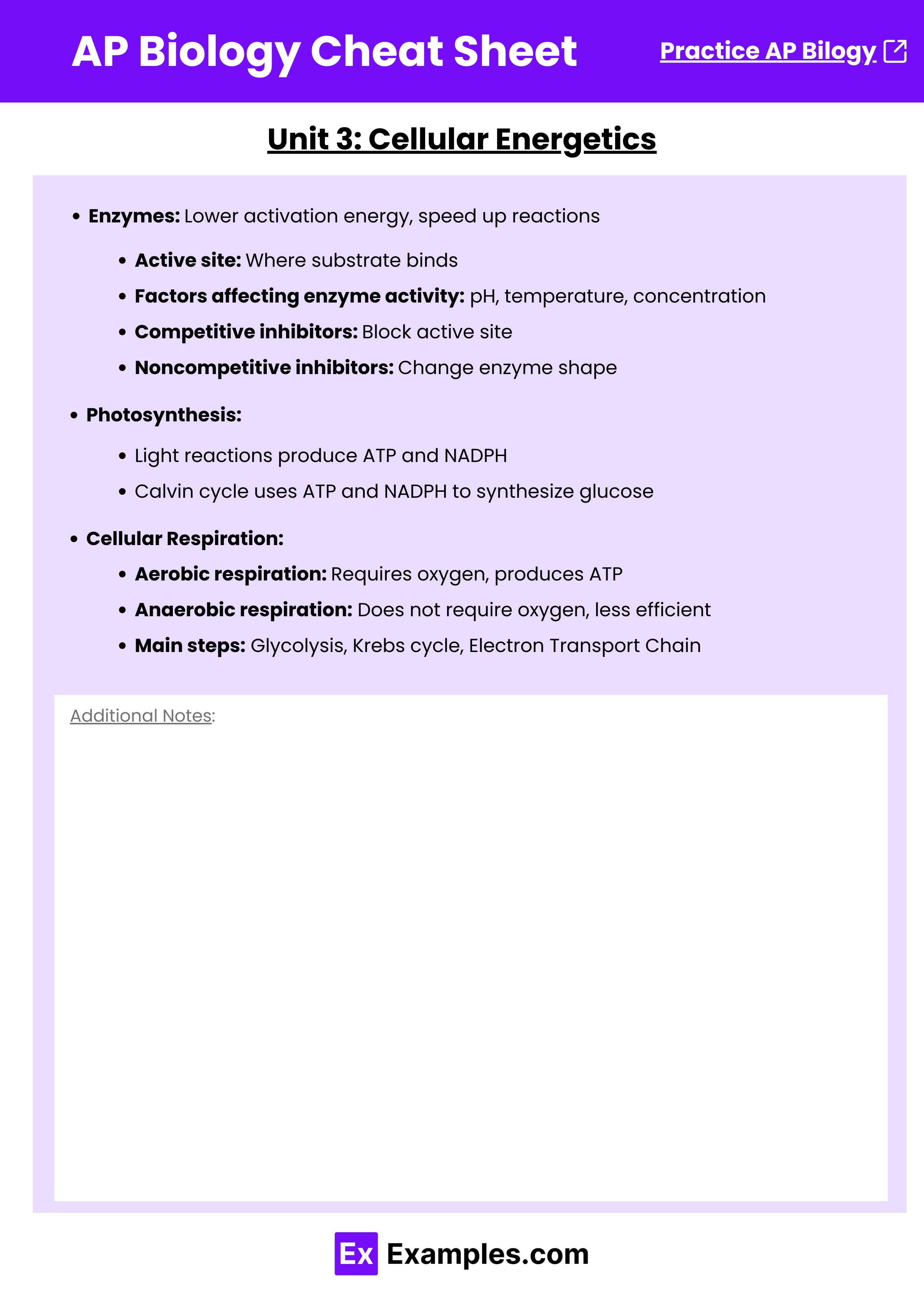
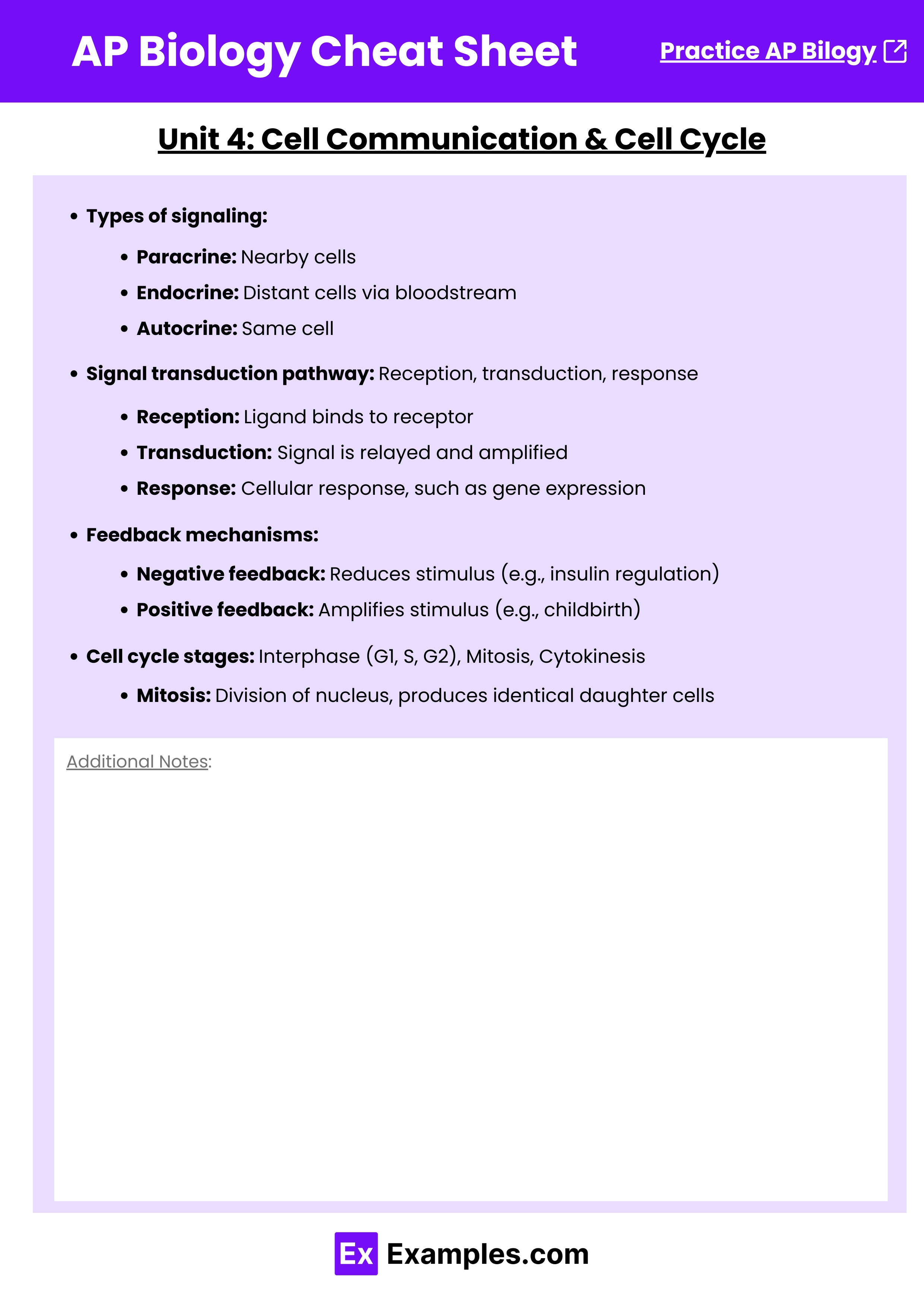

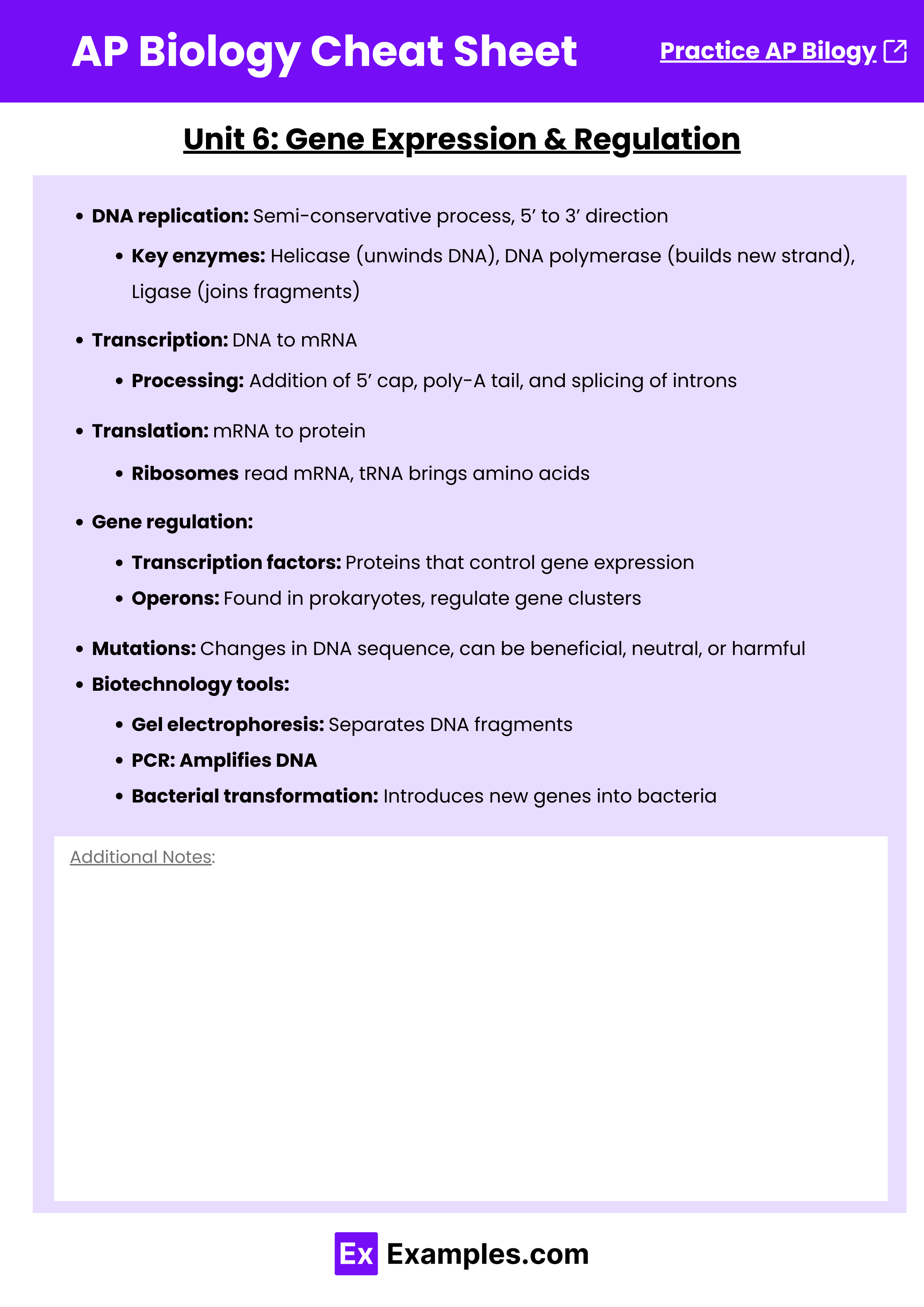

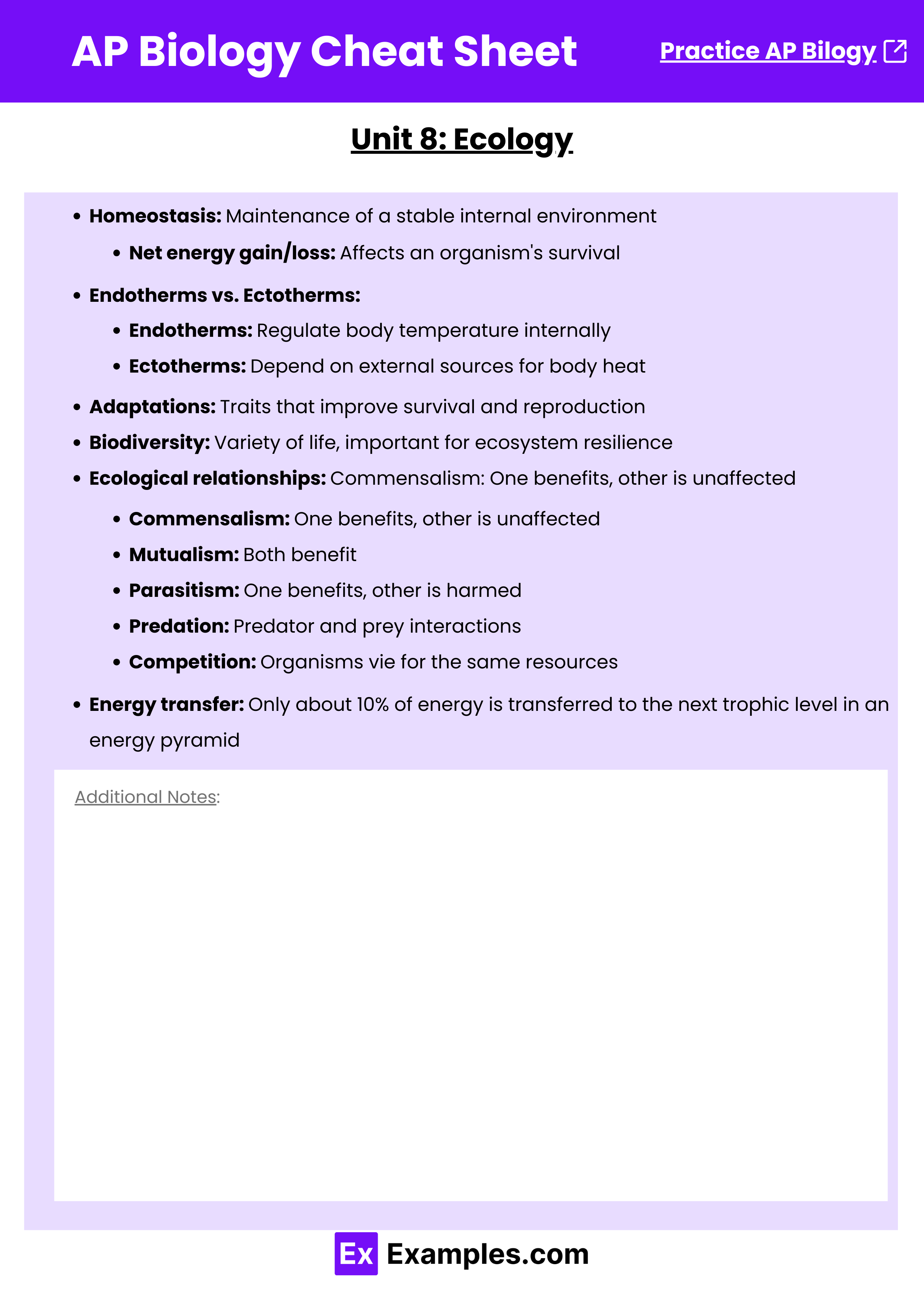
Unit 1: Chemistry of Life
- Water’s unique properties:
- Cohesion: Water molecules stick to each other
- Adhesion: Water molecules stick to other surfaces
- Surface tension: Allows insects to walk on water
- Hydrolysis breaks bonds; dehydration synthesis forms bonds
- Nucleic acids: DNA and RNA, composed of nucleotides
- Nucleotides: made of a sugar, phosphate group, and nitrogenous base
- Proteins: Comprised of amino acids; structure determines function
- Carbohydrates: Sugars that store energy
- Lipids: Nonpolar molecules, found in cell membranes, vary in saturation
Unit 2: Cell Structure & Function
- Key organelles:
- Ribosomes: Protein synthesis
- Endoplasmic Reticulum (ER): Detoxification and lipid production
- Golgi Apparatus: Modifies and packages proteins
- Mitochondria: ATP production, powerhouse of the cell
- Lysosomes: Enzyme digestion
- Cytoskeleton: Provides structural support and aids in cell movement
- Phospholipid bilayer: Selective permeability for nutrients and waste
- High surface area: Enhances transport efficiency
- Active transport: Moves substances against concentration gradient using ATP
- Endosymbiotic theory: Origins of mitochondria and chloroplasts
Unit 3: Cellular Energetics
- Enzymes: Lower activation energy, speed up reactions
- Active site: Where substrate binds
- Factors affecting enzyme activity: pH, temperature, concentration
- Competitive inhibitors: Block active site
- Noncompetitive inhibitors: Change enzyme shape
- Photosynthesis:
- Light reactions produce ATP and NADPH
- Calvin cycle uses ATP and NADPH to synthesize glucose
- Cellular Respiration:
- Aerobic respiration: Requires oxygen, produces ATP
- Anaerobic respiration: Does not require oxygen, less efficient
- Main steps: Glycolysis, Krebs cycle, Electron Transport Chain
Unit 4: Cell Communication & Cell Cycle
- Types of signaling:
- Paracrine: Nearby cells
- Endocrine: Distant cells via bloodstream
- Autocrine: Same cell
- Signal transduction pathway: Reception, transduction, response
- Reception: Ligand binds to receptor
- Transduction: Signal is relayed and amplified
- Response: Cellular response, such as gene expression
- Feedback mechanisms:
- Negative feedback: Reduces stimulus (e.g., insulin regulation)
- Positive feedback: Amplifies stimulus (e.g., childbirth)
- Cell cycle stages: Interphase (G1, S, G2), Mitosis, Cytokinesis
- Mitosis: Division of nucleus, produces identical daughter cells
Unit 5: Heredity
- Meiosis:
- Meiosis I: Homologous chromosomes separate
- Meiosis II: Sister chromatids separate
- Results in four genetically unique haploid cells
- Genetic variation:
- Crossing over: Exchange of genetic material between homologous chromosomes
- Independent assortment: Random distribution of chromosomes
- Pedigree analysis: Tracking inheritance patterns
- Environmental influences: Can affect gene expression (e.g., temperature influencing fur color)
- Genetic disorders: Result from mutations or chromosomal abnormalities
Unit 6: Gene Expression & Regulation
- DNA replication: Semi-conservative process, 5’ to 3’ direction
- Key enzymes: Helicase (unwinds DNA), DNA polymerase (builds new strand), Ligase (joins fragments)
- Transcription: DNA to mRNA
- Processing: Addition of 5’ cap, poly-A tail, and splicing of introns
- Translation: mRNA to protein
- Ribosomes read mRNA, tRNA brings amino acids
- Gene regulation:
- Transcription factors: Proteins that control gene expression
- Operons: Found in prokaryotes, regulate gene clusters
- Mutations: Changes in DNA sequence, can be beneficial, neutral, or harmful
- Biotechnology tools:
- Gel electrophoresis: Separates DNA fragments
- PCR: Amplifies DNA
- Bacterial transformation: Introduces new genes into bacteria
Unit 7: Natural Selection
- Evolution: Change in allele frequencies over time
- Natural selection: Process where organisms better adapted to their environment tend to survive and reproduce
- Genetic drift: Random changes in allele frequencies
- Hardy-Weinberg equilibrium: Describes a non-evolving population
- Phylogenetic trees: Show evolutionary relationships
- Extinction: Leads to new niches and opportunities for survivors
- Population dynamics: Study of how populations change over time
Unit 8: Ecology
- Homeostasis: Maintenance of a stable internal environment
- Net energy gain/loss: Affects an organism’s survival
- Endotherms vs. Ectotherms:
- Endotherms: Regulate body temperature internally
- Ectotherms: Depend on external sources for body heat
- Adaptations: Traits that improve survival and reproduction
- Biodiversity: Variety of life, important for ecosystem resilience
- Ecological relationships:
- Commensalism: One benefits, other is unaffected
- Mutualism: Both benefit
- Parasitism: One benefits, other is harmed
- Predation: Predator and prey interactions
- Competition: Organisms vie for the same resources
- Energy transfer: Only about 10% of energy is transferred to the next trophic level in an energy pyramid

